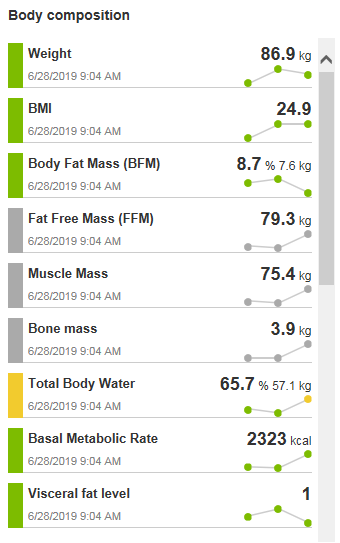At Bramcote Leisure Centre we have our own competitive boxer, Calum Reeve. He’s gearing up for his next fight, here’s his training blog, detailing all the hard work and determination that goes into getting fight ready.
My fight
My big fight will be on Saturday 3 August I will fight at the Motorpoint Arena in Nottingham. A venue that’s familiar to me. I visited many times as a young teenager to watch a hero of mine, Carl Froch, fight for world titles. Fast forward 10 years and I will be fighting in the same arena. This time Carl Froch will be the one watching. His brother, Lee Froch, is the main event in a heavyweight title fight against Nathan Ward from Derby. Here’s my journey from the training camp up to the fight night.
Boxing is a sport that requires strength, power, speed, endurance, reflexes and intelligence. Every single part of your body will be involved in a boxing fight, so it requires a comprehensive training plan for the whole body. A good nutritional plan is also an integral part of the plan.
My training plan
I like to give myself a good eight week training block to prepare for a fight; though this doesn’t mean that I am not training before. My fight plan will be ranking up my regular training and tailoring it to the specifics of boxing. With the fight confirmed well in advance I can start to bring together all my training.
At twelve weeks
This is the time to work on full body strength and building muscle mass, done through a programme of compound movements. Compound exercises are multi-joint movements that work several muscles or muscle groups at one time moves are a great base for exercise as they work multiple muscles at the same time. Examples include; squats, deadlifts and pull-ups. These are important as boxing draws upon many disciplines; primarily power and speed. Throwing a punch combines different muscle groups; with power and speed generated through various muscles in the legs, back, core and shoulders.
During this time I am also improving my aerobic levels with running and work in the boxing gym on the pads and bags. Throughout my training block I will train the core muscles a number of times a week as well. The core is a major contributor in boxing, in throwing a punch with power and speed. A strong core is also pretty beneficial when taking punches to the mid-section too!
Eight weeks out
It’s time to start to really push my training levels up, training twice a day most days. I start to change the strength training into more power based lifts such as squat presses and clean and press. Boxing incorporates power through the whole body; including the legs, core and back muscles.
My diet
This is also taken more seriously 8 weeks prior to the fight. In boxing there are weight divisions with weight limits that you must meet in order to compete. I am a Light Heavyweight and often have to lose around 5-6 pounds to make this limit. One of the first things I cut out of my diet is alcohol I am not a big drinker anyway but this can have a big impact on your training. One impact of alcohol in the diet is weight gain, but it can also alcohol affect your reaction times and the recovery time after a workout.
My diet starts to become stricter and I avoid foods that are high in sugar and saturated fats. Instead I get my recommended fat intake from foods like salmon and nuts, which are better sources of “good fats”. My diet consists of around 3500-3800 calories a day as I can often burn a lot of calories through training.
Six weeks out
I start to increase the amount of sparring, trying to spar various fighters of different weight and different experience levels. By this time I should be starting to see improvements in my fitness levels when in the ring sparring and on the pads. Boxing is a sport that involves multiple energy systems, so it’s important to combine the two in training. Long distance runs build aerobic fitness whilst the explosive elements of boxing draws upon the anaerobic system. For this anaerobic training I do hill sprints, bursts of punching on the bag, and powerful sprints on the rowing machine. These bursts of power of up to 30 seconds mimic the demands of the fight.
Two weeks out
It’s time to start to tone down the intense sparing; primarily to avoid any cuts or injuries. A cut or injury at this stage would mean that I could not fight. Two weeks before the fight is when I start to take my weight seriously, I know I will only be a couple of pounds above the weight limit and this can easily be lost in this time. It is important not to give yourself too much weight to lose the week before a fight as this is often lost in an unhealthy way which can impact on performance.
Throughout my training block I will monitor my body composition by using the Tanita body stat analysis scales which can be found in each of LLeisure’s three gyms, at Bramcote, Chilwell Olympia and Kimberley Leisure Centres.
 I find this really useful to track my body fat% and muscle mass levels as you can see in the picture.
I find this really useful to track my body fat% and muscle mass levels as you can see in the picture.
The next time you’ll hear from me will be in the second part of the blog, which will come after the fight. This will include my fight week schedule, the weigh in and the report on how the fight went.
If you are interested in coming to support me please message me on Instagram @calumreevefitness or speak to me in the gym.
You can also find me teaching Boxfit classes at Bramcote Leisure centre on a Monday at 6pm and Wednesday 9.45-10.45am.
Calum Reeve
Fitness Advisor/Personal Trainer
Bramcote Leisure Centre




